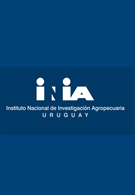The genetic diversity of several local p opulations of the fungal pathogen Cochliobolus sativus, collected over 3 years fromdifferent regions of the Czech Republic, was examined using amplified fragment length polymorphism (AFLP). A high levelof variability was found even among isolates from one lesion. Measures of multilocus linkage disequilibrium suggested thatrecombination has a minor impact on the genetic structure of populations. Coch liobolus sativus forms genetically divergentpopulations ( FST=0Æ33), indi cating a low level of genefl ow between populations. This was supported by a significant corre-lation between genetic diversity and geographical distances up to 80?100 km. The most likely explanation for the geneticvariability is that the fungus forms conidia with highly variable chromo somal rearrangements. The differentiation observedamong local populations implies that genetic drift, including a founder effect, combined with restricted migration generatesthe structure of C. sativus popu lations.

